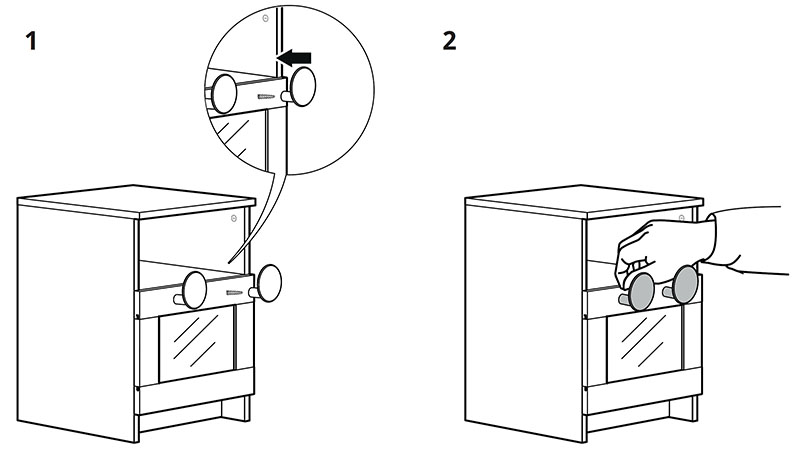The ThisAbles project is a series of 3D-printed IKEA furniture hacks making life easier for those without full use of their bodies. Since IKEA furniture is affordable and available across most of the planet, it’s the ideal target for a project that aims to make 3D-printed improvements accessible to everyone.
These hacks fit all meanings of the word “accessible”: Available worldwide, affordable, and helping people overcome physical barriers of everyday living. ThisAbles has support of multiple organizations including IKEA Israel. In their short introductory video (embedded below the break) they explained their process to find ways to make big impacts with simple 3D-printed modifications. From bumpers protecting furniture against wheelchair damage, to handles that allow drawers to be opened without fine fingertip control. Each of these designs also fit the well-known IKEA aesthetic, including their IKEA style illustrated manuals.
The site launched with thirteen downloadable solutions, but they have ambitions for more with user feedback. There’s a form where people can submit problems they would like to see solved, or alternatively, people can submit solutions they’ve already created and wish to share with the world. Making small changes to commodity IKEA furniture, these 3D printed accessories will have far more impact on people’s lives than the average figurine trinket on Thingiverse. It’s just the latest way we can apply hacker ingenuity to help others to do everything from simple daily tasks to video gaming.
[via Washington Post]















This sounds very promising, what a great initiative!
a suggestion. Swival botton for a arm chair that also raises it.
Hilarious idea!
What’s the point of making them 3D printed though? Couldn’t IKEA just sell these add-ons in store with the furniture? It seems requiring them to be 3D printed actually makes it LESS accessible than just being able to buy the furniture in a state that’s already usable for these folks.
The market is too small. Low production volume is why every accessibility device is far more expensive than you think they should be, if they exist at all. Starting with manufacturing: there’s no business case for IKEA to spin up a plastic injection molding run of these things. Then there’s logistics: IKEA ship products by the pallet. A single store would never move enough of them to justify stocking a pallet of it on their warehouse racks. Stocking, inventory, etc, the same story repeats all the way through.
But small markets that require customization is where 3D printing wins over traditional manufacturing, thus the point of making them 3D printable anywhere.
Well first of all I think the idea of it being “too expensive” for IKEA to get these injection molded is ridiculous. It’s not like they’re some small company, and the positive PR would more than pay for itself.
But more importantly, that doesn’t actually answer the question. Even if 3D printing was best/easiest way to make these things, it still doesn’t explain why IKEA is putting burden on the customer to print them. Why can’t they be printed at the IKEA store at the time of purchase?
Not to make light of the fellow in the video, but how is he supposed to print and install these parts if he can’t even operate a desk lamp?
Honestly, this just sounds like virtue signaling to generate buzz. If they were interested in actually helping the disabled, they would make these available as a normal option. Or even make a line of furniture that already has these features. Instead they just throw some STLs out there and wish you luck.
“Why can’t they be printed at the IKEA store at the time of purchase?” This should def be the next step. At the very least get some one-step ordering from a print hub. People who need accessibility devices probably can’t operate a 3d printer.
Convince Ikea to put 3D printers in their stores for such products. Relatively small outlay with a big PR benefit and the ability to expand such product lines with modest marginal costs.
I think the worldwide market for Ikea would be large enough to do a limited run of injection-moulded parts (Short run tooling for a few thousand parts can be made relatively cheaply. They can then simply ship them worldwide for a limited fee from their main distribution centers (There’s one or two on each continent afaik). Some of these are actually useful even to more-able bodied people. Plenty of elderly have problems pushing small buttons or grasping smaller handles on doors and drawers. I can see these parts actually having a much larger market than you might think
These items are actually also suited for the elderly, e.g. the couch-risers!
Smart business…They saw the need and came up with solutions…